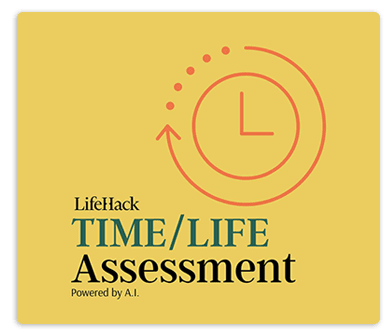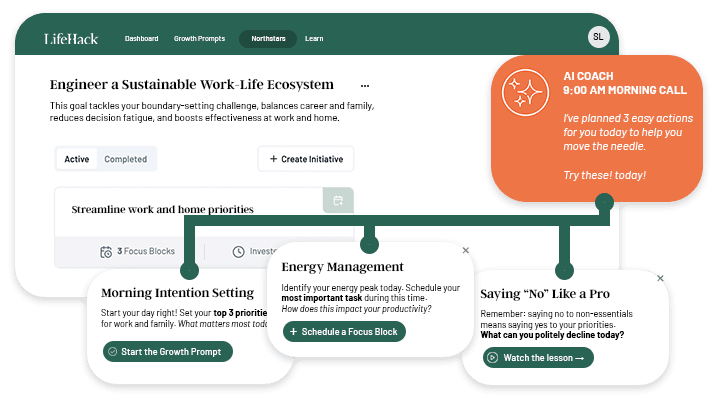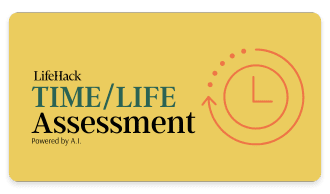Have you bought into the ethos that to be productive you must work all the hours under the sun?
If yes, then your day probably looks like this…
You get up at the crack of dawn, get to your office super-early and begin working. When lunch time comes around, you decide to skip it, choosing instead to eat at your desk so you can continue working. As your colleagues begin leaving at the end of the day, you stay late while you try in vain to finish all of your tasks and projects.
For a few months, you’re excited by what you believe you are achieving. But as time goes by, you realize that you’re not as productive as you think, and you’re struggling to keep up the hectic pace.
If you’re honest with yourself, if you don’t make some urgent changes – you’ll be burnt out within a year.
What’s the Connection Between Minimalism and Productivity?
The first thing to grasp, is that there is a little-known (but definite) connection between minimalism and productivity.
If you’re unfamiliar with minimalism, then think of it this way: Performing a task in as simple a way as possible.
This could involve devising a way to deal with your emails efficiently, or learning how to prioritize important work over tasks that can be scrapped. It may even mean developing the ability to focus 100% on a task at hand.
Minimalism has an end goal of making your work easier… and more productive!
As an example, if you’ve streamlined the way you create reports, you may find that you can do this task in half the time that it previously took you. All it needed was some initial time and creativity to look for ways to make the task as simple as possible.
If you find yourself continually running out of time at work, take a step back, and begin seeking ways to make your workload easier to deal with. Each task that you simplify, can lead to significant time savings (especially when calculated over periods of weeks and months).
Despite what you may have been taught at school or college, minimalism and productivity are intrinsically linked.
8 Ways Minimalism Can Boost Your Work Productivity
So, what are the best ways to introduce a minimalistic approach to your work?
Let’s take a look now.
Write a daily to-do list.
Begin your working day by writing a to-do list (either on paper or by using an app). It only takes a few minutes to make a list of everything you would like to do in the day ahead. And it’s remarkable how this simple activity can crystallize your thoughts and help plan your day.
Identify essential tasks.
Once you’ve completed your to-do list. Take a good look at it. Are there two or three tasks that you absolutely need to finish today? If yes, can you identify them? In most cases, essential tasks will jump out of your to-do list. Make sure you mark these as VIT (Very Important Tasks!).
Cut non-essential tasks.
Take a second look at your to-do list. Are there any tasks that you’ve listed that you don’t really need to do? For example, you may have listed several meetings – but are they all really necessary? By looking at your to-do list with a minimalist mindset, you’ll be sure to find things that you can scratch off your list.
Learn to focus and defeat distractions.
To be a successful minimalist, you must learn to develop laser focus. If you can’t avoid distractions (such as loud conversations in an open-plan office), then by building powerful mental focus – distractions won’t distract you any more!
Turn tasks into daily habits.
Daily habits can be incredibly potent. They can break down complex tasks and turn them into bite-sized daily treats! For instance, you may work at a restaurant and need to clean the outside of the building every week. The cleaning might take you one hour to complete. Instead of this, you could build a daily routine of cleaning a part of the outside every day for 10 minutes. This will be easier and more enjoyable to complete than working a full hour on the task. It will also enable you to make it a habit – so you’ll never have to motivate yourself to complete it.
Stretch time.
Did you know that it’s possible to stretch time? It’s true. Let’s say that I give you three hours to create a Google Slides presentation. You start the task, and if you’re like most people, you’ll finish it somewhere around the three-hour mark. Now, imagine that instead of three hours, I told you that you needed to create it in 90 minutes. Guess what – you’d be able to do it! This is what I mean by stretching time. To save this precious resource, assign yourself less time to complete your tasks.
Unlock Your Time Potential: From Chaos to Control
Discover how to reclaim your time and transform chaos into productivity with our comprehensive Time/Life Assessment.
If you're ready to take control of your time and boost your efficiency, don't miss this opportunity to get a personalized analysis and action plan.

Be aware of the Pareto Principle.
You may be unfamiliar with the term Pareto Principle, but I’m sure you’ve heard of the 80/20 rule. Well, they are the same thing. This rule/principle states that just 20% of our efforts will lead to 80% of our results. Looking at from the opposite perspective, 80% of our efforts will lead to just 20% of our results! The trick is to become aware of the 20% of actions that are producing most of our results. Identify these actions, focus on performing them, and your productivity will skyrocket.
Take regular breaks.
It’s tempting to skip breaks (and even lunch) when you have lots of tasks and projects ahead of you. However, research has shown that workers who take regular breaks are actually more productive than those who don’t.[1] There are several science-backed reasons for taking regular breaks, including the fact that they help us to maintain our focus, help us remember information, and help us to reevaluate our goals. So, don’t let your colleagues persuade you to keep working. Take regular breaks, and begin to see an immediate boost to your productivity.
Start adding these minimalist techniques to your life right now. You’ll be amazed at how much more relaxed you are – and how much more productive you’ve become!
Featured photo credit: Pixabay via pexels.com
Ready for a Goal Breakthrough? Unlock Your Personalized Strategy

Experience the power of a strategy tailored just for you.
Our personalized system provides:
- Custom-crafted action steps based on your unique situation
- Insights tailored to your specific challenges and strengths
- A personalized roadmap to turn your goals into reality
Tailored recommendations powered by smart analysis















































